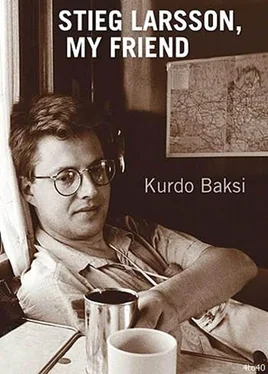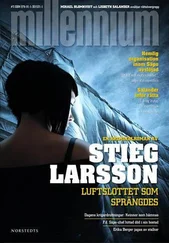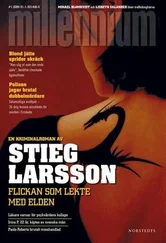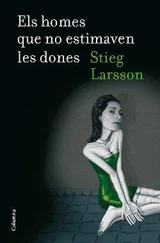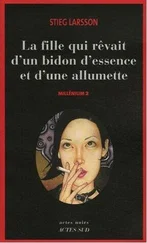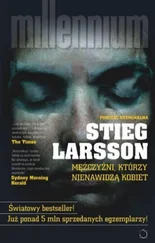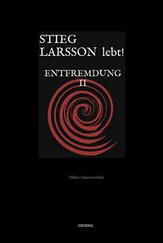“I agree with you,” I said in the end. “ Expo is too important to be allowed to collapse. I’m prepared to do my bit. But how will it be done, in practical terms? Shall we have two publishers and two editors-in-chief?”
“I thought Expo ’s pages should be yellow instead of white. We’ll design and produce between twelve and twenty-four pages. You’ll pay for the printing and distribution. You can be editorin-chief of both Svartvitt and Expo . Somebody from Expo can be the publisher. That way you can escape being taken to court all the time.”
We both laughed at that. Stieg continued talking. He seemed to be in an exalted state now, gesticulating more and more wildly, with increasing confidence. I had swallowed the bait, and he knew it.
“Behind closed doors I will be the editor, but I don’t want my name linked publicly with the job.”
“As usual, in other words,” I said.
“ Expo and Svartvitt will be two independent and equal journals. None of us will have the right to interfere in the editorial work of the other. Is that sufficiently clear?”
“How long have you been thinking about this?”
He smiled and shrugged.
“Maybe I just thought it up.”
“That wouldn’t surprise me,” I said. “But I have a few questions, Stieg. How come Expo writes so much about equality, but behaves like a men’s club? How can an anti-racist journal find it so difficult to recruit staff with an immigrant background?”
“I agree. We lack credibility in that respect. We must do something about it immediately.”
“O.K.,” I said. “Those are my only objections. We can publish our journals jointly – let’s say until the next election. Then we’ll have to take stock and decide if we should continue. But before we shake hands on it, I want to propose a better deal than the one you offered me. We’ll pay for printing and distribution. Can you pay the rent? If we make a profit, which I don’t suppose we shall, we’ll share the profits. If we run at a loss, I’ll be responsible for the entire amount.”
When we shook hands Stieg smiled more broadly than I had ever seen him do before. Although in fact he seemed more relieved than happy. It was as if a burden had been lifted from his shoulders. Perhaps he wasn’t convinced that he had saved Expo , but he was pretty sure that he had bought enough time to ride out the storm.
“On Monday,” I said, raising my coffee cup as if in a toast, “I’ll arrange for a contract to be drawn up that both parties can sign. We can’t have any misunderstandings just because you and I are such good friends.”
He looked hard at me, then rolled another cigarette and lifted a yellow lighter with his left hand.
“No, Kurdo,” he said rather sternly. “We don’t need a contract. If I didn’t trust you I would never have contacted you in the first place. I know you won’t let me down. An oral promise and a handshake will be sufficient. From January onwards we’ll publish Svartvitt together with Expo . We’ll take care of the rent.”
“O.K.”
“What do you say to announcing the merger of Sweden’s two most important anti-racist journals on 30 November?”
“That sounds like an excellent idea,” I said, realizing that this was something he’d been thinking about in order to attract maximum publicity. It was also practical to supply our combined subscribers with the news about Svartvitt and Expo on the day when nationalists celebrate the exploits of the Swedish warriorking Charles XII. (Why they should want to do that is a bit of a mystery, as his defeat in the Great Northern War effectively brought the Swedish Empire to an end.)
We said goodbye outside Tidningarnas Telegrambyrå, headquarters of the Swedish Central News Agency, in Scheelegatan. I watched Stieg vanish through the door and found myself thinking about the remarkable baobab tree. For eleven years I had been carefully tending my own little tree known as Svartvitt . It was clear that I was now faced with a major challenge.
I eventually decided that two trees with similar characteristics would be bound to thrive together. They could support and shade each other in difficult times, which ought to make it easier for both to survive in the barren savannah. I felt happy and contented as I slowly made my way back to my office.
Stieg as colleague and journalist
I’ve suddenly remembered something that happened in the early hours of 9 November, 1999. I was staying at the Prize Hotel in Stockholm. The telephone rang at 2.15. Although I was still awake, alarm bells went off inside my head – one seldom receives good news in the middle of the night.
“Stieg hasn’t come home,” Eva screamed into my mobile.
She was sniffling and sobbing. I tried to calm her down, but I could feel myself going ice cold. In as soothing a voice as I could manage, I assured her that nothing bad could have happened. A few hours later it became apparent that Stieg had fallen asleep in his office. Probably, now that I think about it, he had been working and had decided, unusually, to lie down on a sofa.
Today, so many years later, I can laugh at the memory.
Was that the moment I realized that Stieg was writing books at night? I can’t remember. But I do remember clearly how relieved I was that nothing awful had happened to him.
When Stieg was appointed to a post as a graphic designer at Tidningarnas Telegrambyrå, he could hardly have realized how long he would be associated with that place of work. Although he maintained throughout those years that T.T. played an important role in independent news-reporting, he had a remarkable love-hate relationship with it. No doubt his appointment was in many ways a sort of revenge as far as he was concerned. Now he could make up for the frustration he had felt on being rejected as an eighteen-year-old by the Stockholm College of Journalism in the autumn of 1972. Now he would show them that their idiotic admissions requirements meant they had lost a reporter who was more than a match for anybody.
It was this lust for revenge which ensured that he had a plan even when he walked for the first time through the door of the Hötorget skyscraper where T.T. was based in the 1970s. He would work at everything he was required to do in the way of illustrations, diagrams, pictures and paste-ups in order to become a fully fledged, damned good reporter in due course.
Things did not go according to plan, however. He was never given the assignments he expected, and the management appeared to have no interest at all in his ideas.
Despite this, T.T. came to mean an awful lot to Stieg. It was not simply a matter of earning a living, it was more a question of living or not living. The reasons why he could never bring himself to leave T.T. were mental, not financial.
I have worked through T.T.’s digital archives in an attempt to track down Stieg’s articles. The first time his name crops up is in January 1982. On 11 July, 1985, his initials – “sla” – appear in print for the first time. In connection with an illustration. Then follow hundreds of illustrations, diagrams, pictures and paste-ups, all signed by him. Strikingly often they are linked with financial articles.
The first article he wrote dates from 22 January, 1992, and is about the history of the Swedish intelligence agency. If you consider all the years Stieg worked at T.T., he wrote comparatively few articles of any length. I have traced twenty-five written between 1992 and 1999. Eight are tips for crime novels to read at Christmas or during the summer holidays, which is interesting in view of what happened later. The articles show clearly that Stieg was impressed by the novels of Sara Paretsky, Harlan Ellison, Liza Cody and, last but by no means least, Elizabeth George.
Читать дальше
